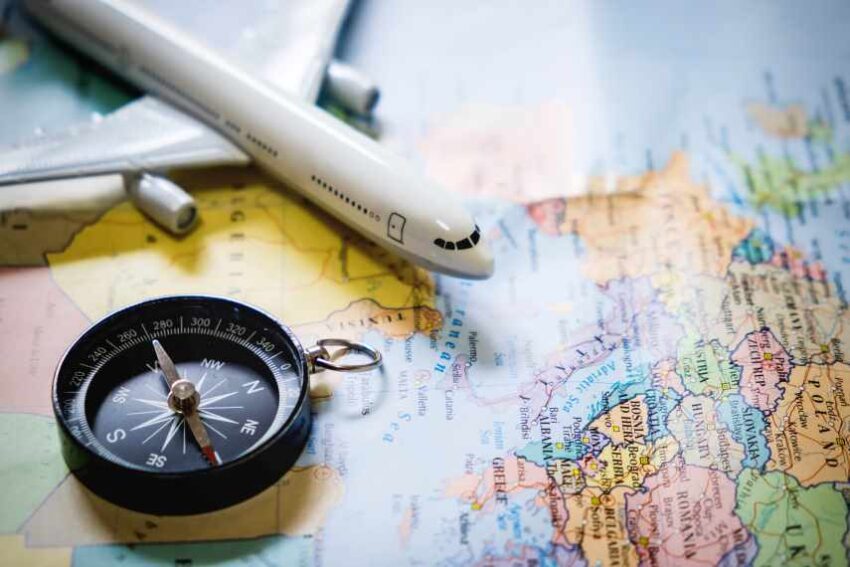Thursday, July 10, 2025

Portugal, in 2024, marked a historic high, receiving 29 million foreign visitors—a historic high that solidifies the country’s growing status as a premier overseas travel destination. Such a surge in overseas visits speaks to Portugal being a premier vacation destination, blending centuries-old culture and great outdoors with a warm atmosphere.
According to the National Statistics Institute (INE), this record number of visitors signals a remarkable recovery and growth for Portugal’s tourism sector. The surge not only reflects the nation’s ability to bounce back from pandemic-era disruptions but also showcases the strong demand for Portugal’s historic cities, scenic coastlines, and vibrant cultural festivals. Whether visiting Lisbon’s bustling streets, Porto’s riverside charm, or the Algarve’s sandy shores, Portugal’s diverse offerings appeal to travelers from around the world.
Economic Contribution of Tourism: A Significant Driver of Portugal’s GDP
2024’s 29 million tourists mean big economic gains. According to the World Travel & Tourism Council (WTTC), the travel sector will deliver €62.7 billion to the Portuguese economy in 2025, contributing approximately 21.5% of the nation’s GDP. This represents almost 38% more than before the pandemic, showing just how swift the sector’s comeback has been.
International tourists will spend €33.1 billion, and domestic tourists will spend €22.9 billion. These are indicators of a healthy tourism economy, and Portugal continues to attract international visitors and grow its international base of tourists.
Diversification of Tourism in Portugal: Beyond Lisbon and Porto
While Lisbon, Porto, and the Algarve will continue to dominate overseas visitors, other regions of Portugal are also benefiting from growing interest. Regions including the West & Tagus Valley, with its scenic towns of Óbidos and Nazaré, and Central Portugal, including Coimbra, have had growing visitors. Diversification of this kind will be necessary to sustain growth and spread tourism’s benefits throughout Portugal.
For example, tourists visiting lesser-known areas frequently look for authentic experiences of culture and history, which adds to Portugal’s popularity. By benefiting from the tourism surge, wider areas are uplifted, developing their economies and offering potential for small enterprises to succeed.
Tourism Forecast: Bright Future Ahead for Portugal
Prospects are that tourism development in Portugal will continue uninterrupted. According to projections by the WTTC, in 2025, the tourism economy in the country will account for more than 1.2 million jobs, a number that will keep on growing in subsequent years. Contributions to GDP by the sector are also predicted to jump all the way to €74.6 billion by 2035, a figure that will continue climbing in future years in terms of the number of supported jobs.
Impressive statistics are a testimony to a deep-rooted transformation in Portugal’s economy, in which tourism has found a permanent place within Portugal’s economic panorama. As Portugal invests more in sustaining and developing tourism infrastructure, the sector will continue to contribute to the economic success of the nation.
Cultural and Community Impact: Balancing Growth and Preservation
But the boom also poses challenges. The rapid arrival of 29 million visitors poses issues about overcrowding, especially when popular sites are busiest during peak seasons. Though bringing economic rewards, communities have to work to preserve the authenticity and rich culture that makes Portugal so unique.
Portugal’s concern is that tourism development should not compromise its heritage. Sustainable tourism development is what the government is currently engaging in, ensuring that tourism will always be a point of pride for residents and a contributor to the public economy. By balancing economic and preservation of culture, Portugal stands to become a shining example of responsible tourism.
Local Voices: A Sense of Pride and Optimism
Both in Lisbon’s towns and Algarve’s villages, there’s one overriding sentiment of optimism amongst residents and business people. As Lisbon’s tiny coffee shop owners and Porto’s artisans explain, that tourism boom has brought local enterprise back to life, and foreign visitors are eager to sample authentic Portuguese cuisine and handicrafts. One Algarve villa owner admitted that months in advance, bookings are now being secured, showing growing confidence in the Algarve’s tourism sector.
This enthusiasm is not just about the money tourists bring—it’s about a shared appreciation for Portugal’s unique blend of old-world charm and modern amenities. For many local communities, tourism offers a lifeline, but it also provides an opportunity to share Portugal’s cultural treasures with the world.
In Conclusion: Portugal’s Tourism Renaissance
Portugal’s tourism industry has experienced a profound transformation, with 29 million foreign visitors in 2024 marking the beginning of a new era for the sector. As the country continues to embrace sustainable practices and diversify its tourist offerings, the economic impact will remain substantial. With further robust growth on the horizon in years to come, Portugal has solidly reasserted itself as a world tourism leader, delivering visitors a perfect blend of cultural heritage, natural splendor, and contemporary convenience. For visitors and Portuguese people alike, Portugal’s tourism triumph is a joyous manifestation of the country’s resilience, flourishing, and continued power to capture the world’s fancy.
(Source: National Statistics Institute (INE), World Travel & Tourism Council (WTTC), The Portugal News, Breaking Travel News, Travel And Tour World, Portugal Decoded)




